Oregon grape leaves
Image credit: Sigrid Resh
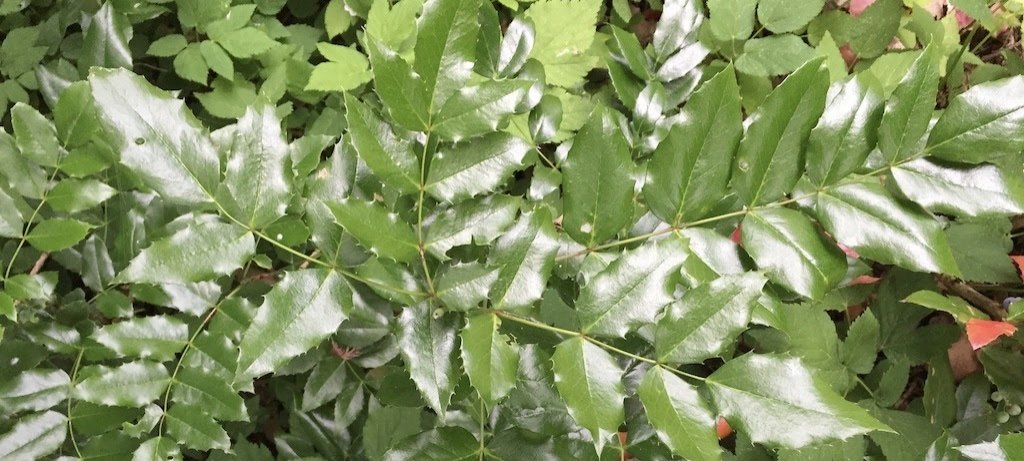
Oregon grape leaves
Image credit: Sigrid Resh
Oregon grape, a woody shrub in the Barberry family, Berberidaceae, is an understory invasive that prefers partial shade and moist, yet well-drained soils
Another key identifying feature is the yellow pigment found within the roots of all Berberidaceae plants. For more information visit Midwest Invasive Species Information Network (MISIN).
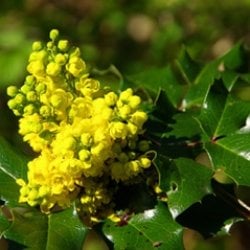
Yellow flowers of Oregon grape
Image credit: MISIN
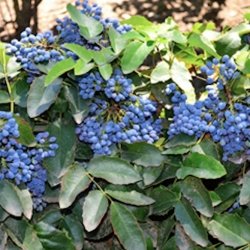
Purple fruit of Oregon grape
Image credit: MISIN
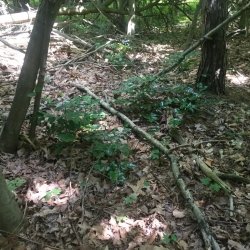
Oregon grape escaped into the forest
Image credit: Sigrid Resh
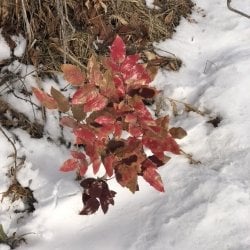
Oregon grape with red foliage in the winter
Image credit: Sigrid Resh
Luckily, Oregon grape is not well established throughout the Keweenaw. However, small populations have been found in Calumet, Houghton near the Pilgrim River, and on the Tech Trails. Managing Oregon grape is similar to managing the more abundant Japanese barberry.
Note: Oregon grape can easily resprout from roots left in the dirt, and their roots have a tendency to spread great distances underground. After pulling, the plant can then be hung in the forest or discarded as long as care is taken to keep the roots away from ground contact until the plant is dried out. If managing while the plant is actively fruiting, the seeds should carefully be bagged and discarded.
Species such as beaked hazelnut (Corylus cornuta) and downy arrowwood (Viburnum rafinesquianum) are native understory shrubs that inhabit similar areas, and would be great choices for replanting areas where Oregon grape has been removed. Beaked hazelnut has showy seeds that feed many native birds and rodents while downy arrow-wood produces purple drupes similar to Oregon grape that provide food for birds and small mammals alike.